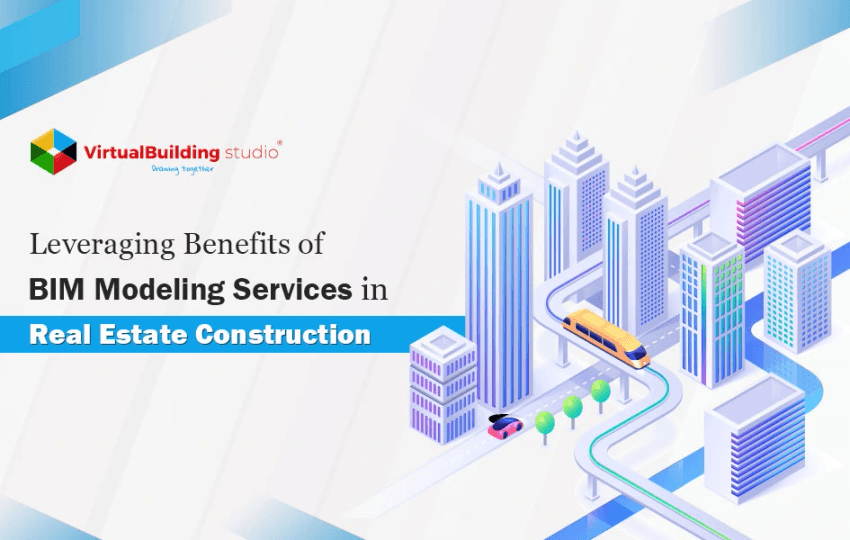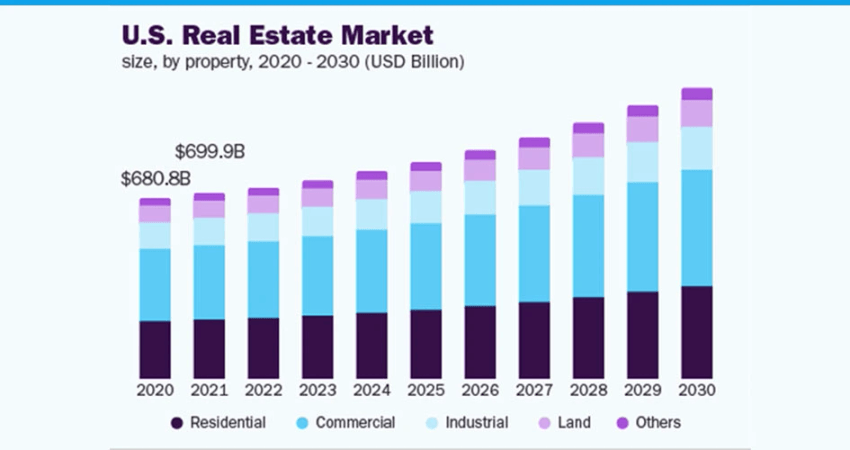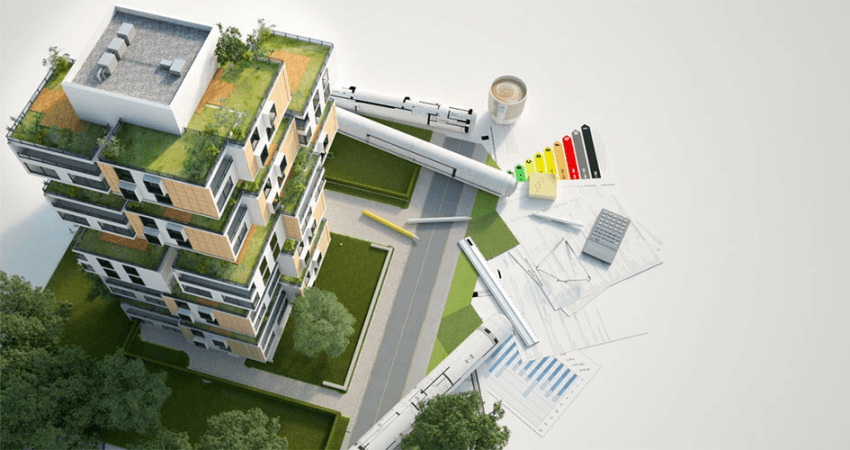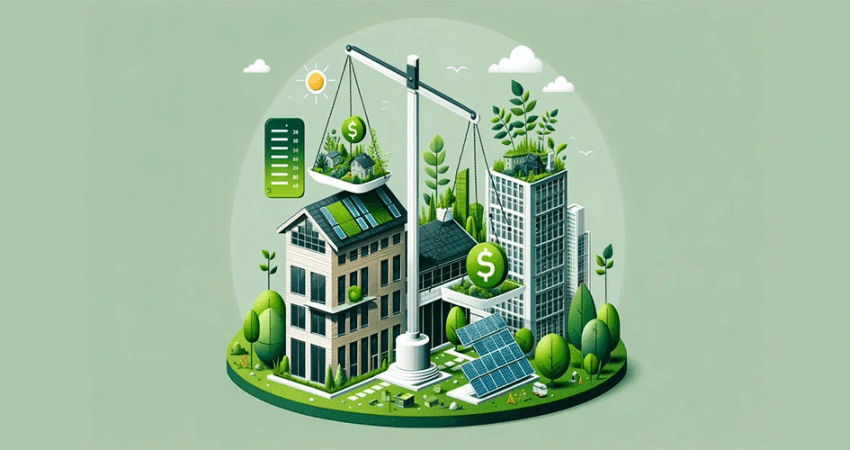
The emergence of technology over the years has drastically metamorphosed the Architecture, engineering, and construction landscape. The AEC professionals are more inclined towards weaving experiences and not just creating spaces. Technology synthesizes the existing data and produces the information to fill the gaps for building lifecycle management.
Building Information Modeling (BIM) is functioning at the forefront of this technological boom. BIM modeling services have transformed the way of operation for the AEC industry as a building model can demonstrate not only the three-dimensional view of the project but the entire building lifecycle.
“What new technology does is create new opportunities to do a job that customers want done.”BIM modeling services generate these opportunities for the user to accomplish the requirements of a project. BIM is evolving at a varying pace globally, especially in the real estate sector.
As per a report by Grand View Research, the global real estate market size was valued at USD 3.69 trillion in 2021 and is expected to witness a compound annual growth rate (CAGR) of 5.2% from 2022 to 2030. and is a growing industry in other parts of the world.

Imagine instantly demonstrating project data to the client from inception to the entire building lifecycle at the click of a button. That is how BIM modeling services benefit the developers. Real estate is a lucrative industry but a responsibility-driven and time-consuming job.
developers have ample responsibilities from land acquisition to property handover. BIM in real estate is a boon for developers as it can solve several problems occurring till the project handover and act as a catalyst for redefining the scope of the construction sector.
Common Challenges Faced By the Real Estate Industry
The industry faces various challenges due to multiple factors, such as wastage of material, significant rework, and lack of data sharing, impacting the building design and execution. Let’s delve deeper to explore the main challenges faced by the real estate industry:
- Making design amendments multiple times
- Enhanced susceptibility to errors and rework
- Increase in the input costs of the project
- Lack of coordination, especially in a virtual environment
- The unavailability of skilled labor leads to increased risks for workers
- Unsure about the productivity and quality of work
Benefits of BIM Modeling Services in Real Estate
BIM modeling services offer a plethora of benefits to the real estate industry, impacting various aspects from inception to ownership. Let’s look at some of these benefits in detail:
Promote Sustainable Construction
BIM Modeling services play a vital role when it comes to promoting sustainable and smart real estate construction.

These services help in identifying the appropriate designs that ensure sustainability and induce energy-efficient alternatives to the project by simulating energy performance, daylighting, and environmental impacts.
The resulting information enables the developers to incorporate environment-friendly features into the project and achieve green building certifications.
Increase in Return on Investment (ROI)
BIM allows the buyer to have a detailed look at the property model, look around the property from the comfort of their dwellings, and avoid making several time-consuming trips.

The model includes every square inch of the building while it is still under construction, enabling the buyer to keep a check on space measurements, furniture placements, color & material selection, and any necessary alterations to the spaces before shifting.
This process assists the cost estimation and impacts the property’s costing during the design phase, gradually increasing the ROI for a project.
Contribute to Marketing and Advertising
The competition in the market makes it crucial for realtors to engage in marketing and advertising strategies to attract potential customers.
BIM in real estate allows developers to position themselves in a better place as compared to their competitors with advanced technology, enhancing design development and project management.
The 3D BIM models help build trust among the customers by providing a comprehensive outlook of the project and letting them know what they are investing in.
Eliminate Design Defect Losses
Design defect losses are a result of a lack of coordination between architects, designers, engineers, and project managers, or due to miscalculation of reinforcement and structural load. These design defects lead to reconstruction or redesign on the project site, adding to the total project cost.

The professional liability insurance maintained by the architects can provide security against such errors but within a specific limit.
These defect losses usually surpass the limit, especially for large-scale projects. Using BIM in real estate projects is an effective way to avoid design defect losses and ensure better project outcomes.
Enhance Collaborative Construction
Incorporating Revit BIM modeling services into a real estate project provides a 360-degree perspective of the spaces, enhances productivity, and ensures quality control, fostering collaboration among project stakeholders.

A collaborative construction eliminates miscommunication and streamlines workflows, leading to a smooth execution on-site. The project team can coordinate with each other for efficient working, identifying possible conflicts, and making wise decisions.
With BIM 360, the stakeholders can easily review the design development, provide necessary feedback, and execute required alterations.
Ensure Building Facility and Lifecycle Management
The post-construction planning often does not include the lifespan and maintenance costs of the project, forbidding the real estate developers to procure a sustainable establishment.
The neglected constructed assets can result in unwanted carbon emissions and increase sustainability issues for a real estate developer.
These issues can be dealt with by introducing BIM in real estate and modeling the effects and alterations related to the maintenance, repair, or improvement of important building systems.
Future of BIM in Real Estate
BIM directs the real estate sector towards a digital era of efficiency, collaboration, quality, and sustainability, altering the way real estate constructions are perceived. The future of the industry promises an innovative and transformative approach towards design, construction, and facility management.
The 3D BIM model depicts the physical and functional characteristics of the building and is making significant waves toward the growth and revolutionization of the real estate industry.
One key aspect of BIM modeling services in the real estate sector is its role in improving collaboration and communication among architects, engineers, designers, and owners to work in sync together.
An efficient collaboration ensures stakeholders’ access to up-to-date information and facilitates smooth building management. It will foster collaboration, promote sustainable building practices, and enhance marketing, making it an indispensable tool for upcoming real estate projects.
Conclusion
Integrating BIM with emerging technologies like virtual reality (VR) and augmented reality (AR) holds significant scope to enhance property sales and marketing.
The combination of these technologies can provide potential clientele with immersive and interactive virtual tours of properties. This experience streamlines the decision-making process and eliminates costly alterations in the post-construction phase.




